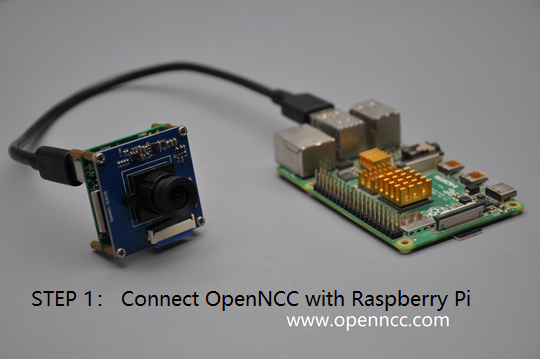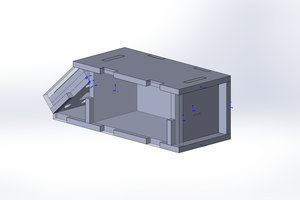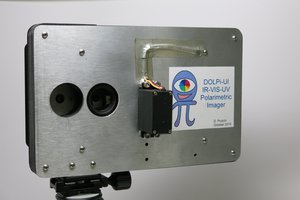Some people use Intel ncs2 and raspberry PI camera modules to build their own edge computing system, but such a combination is difficult to deploy effectively in the final product stage.
1. Raspberry PI can select a few fixed camera modules. It can not effectively meet the different requirements of various resolutions, the field of view angle, low illumination, night vision, and high frame
2. The form of Intel NCS2 is not conducive to product integration, and the mechanical design will be very complex
OpenNCC is a form of combining Intel NCS2 and camera module. It completes AI inference while imaging. The system has high integration and low comprehensive power consumption. It is easy to integrate an edge AI camera system with raspberry PI through a USB interface.
Connecting OpenNCC and raspberry pi
- Power raspberry PI and install the OS
- Connect raspberry PI 4 Model B and OpenNCC with USB. USB3.0 is recommended.

Configuring the Raspberry Pi
The following commands are operated on the board of Raspberry Pi. You need to connect raspberry with a monitor, mouse, and keyboard.
Install libusb, OpenCV and ffmpeg on Raspberry Pi
$ sudo apt-get install libopencv-dev -y
$ sudo apt-get install libusb-dev -y
$sudo apt-get install libusb-1.0.0-dev -y
$ sudo apt-get install ffmpeg -y
- If you want to use python
$ sudo apt-get install python3-opencv -y
- Clone OpenNCC repo
$ git clone https://github.com/EyecloudAi/openncc.git
- Enter your openncc sdk installed path,then run the script
$ cd opennncc/Platform/Raspberry
$ ./pi.sh

Deploy the model and extract inference results
You could deploy the model via OpenNCC View, a QT-based tool. And also could deploy a model using OpenCV. Either way, used the same Openncc API interface.
Enter 'your OpenNCC installed path'/Platform/Raspberry/Example/How_to/Load_a_model, and follow the Readme.md under the directory of the demo to build and run it. Now we're done deploying a model.

> You could also refer to How to deploy an Intel Openvino zoo model on OpenNCC
 Johanna Shi
Johanna Shi


 Alex
Alex
 David Prutchi
David Prutchi